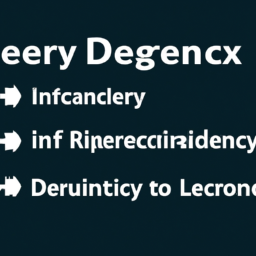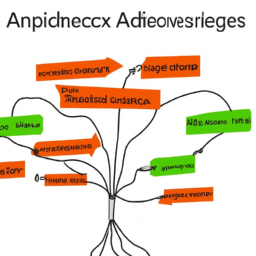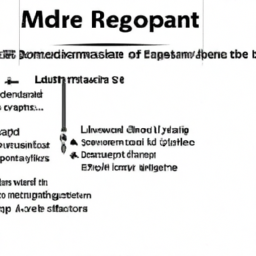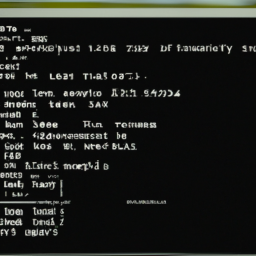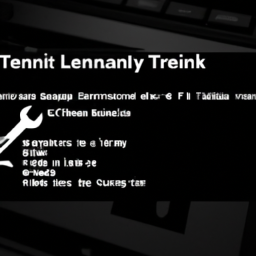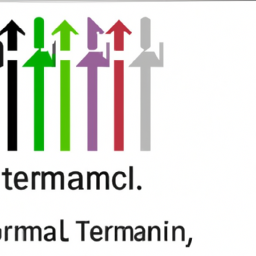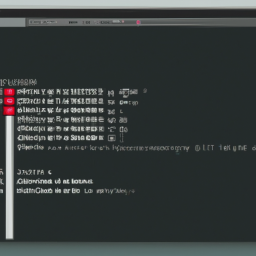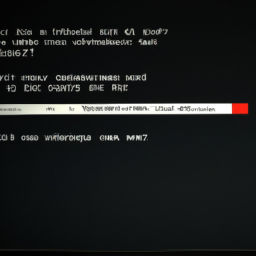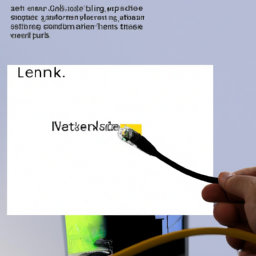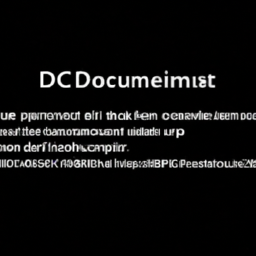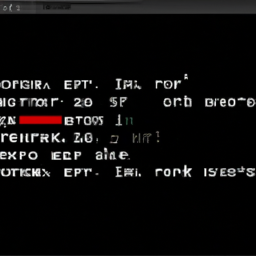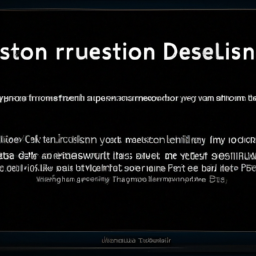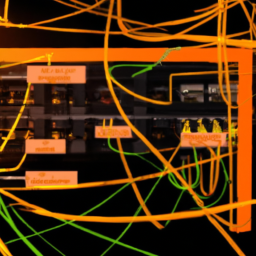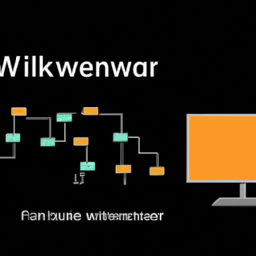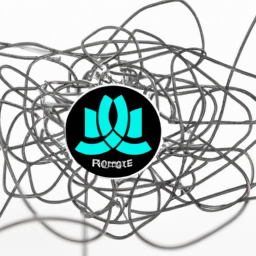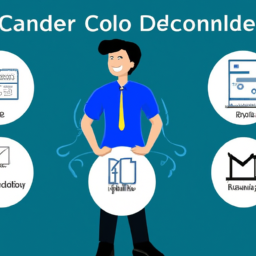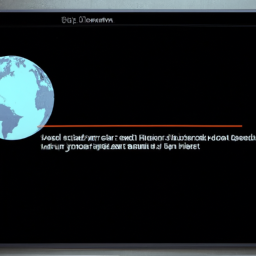Are you tired of encountering missing dependency errors while using Linux? These errors can be frustrating and can hinder your productivity. But fear not, because we have the ultimate solution for you! In this step-by-step guide, we will walk you through the process of troubleshooting missing dependency errors in Linux.
Dependencies are essential components that software programs rely on to function properly. When these dependencies are missing or outdated, errors can occur, preventing you from using certain applications or executing specific commands. But don’t worry, we’ll help you identify the specific missing dependency error and guide you on how to update and install them.
Additionally, we’ll show you how to resolve conflicts and compatibility issues that may arise during the process. We’ll also introduce you to the world of package managers and repositories, which are invaluable tools for managing dependencies in Linux.
So, let’s dive in and get your Linux system running smoothly without any missing dependency errors!
Key Takeaways
- Understanding the basics of dependencies and shared libraries in Linux is crucial for troubleshooting missing dependency errors.
- Analyzing error messages and using package management tools can help identify and install missing dependencies.
- Resolving conflicts and compatibility issues may involve uninstalling conflicting packages, installing new drivers or packages, and checking compatibility before installation.
- Utilizing package managers and repositories, as well as exploring alternative methods like Flatpak or Snap, can help manage and optimize dependencies.
Understand the Basics of Dependencies in Linux
You may be feeling overwhelmed, but understanding the basics of dependencies in Linux will empower you to troubleshoot missing dependency errors with confidence.
When exploring shared libraries, it’s essential to recognize that these are files containing code that can be reused by multiple applications.
Dependencies are the libraries and other software components that a program relies on to function correctly. They form a dependency tree, where each component depends on others in a hierarchical structure.
By understanding this tree, you can identify the specific missing dependency error. This step is crucial in troubleshooting as it allows you to pinpoint the exact component that needs to be installed or updated.
Now that you comprehend the basics of dependencies in Linux, let’s move on to the next section and learn how to identify the specific missing dependency error.
Identify the Specific Missing Dependency Error
To effectively address the issue at hand, it’s essential to first pinpoint the exact error related to a specific dependency that isn’t present. Here are three steps to help you identify the specific missing dependency error:
-
Common causes of missing dependency errors in Linux: Before troubleshooting, it’s important to understand the root causes. Common reasons include outdated software versions, incompatible packages, or incorrect installation procedures.
-
How to check for missing dependencies in Linux: To identify the missing dependency, you can use package management tools like ‘dpkg’ or ‘yum’ to check the status of installed packages. Alternatively, you can use the ‘ldd’ command to check the shared library dependencies of a program.
-
Analyze error messages: When encountering missing dependency errors, carefully read the error messages to identify the specific library or package that’s causing the issue. These messages usually provide valuable information about the missing dependency.
Once you’ve identified the missing dependency error, you can proceed to the subsequent section about updating and installing the missing dependencies.
Update and Install Missing Dependencies
Updating and installing the missing dependencies is crucial for ensuring a smooth and efficient system performance. When troubleshooting common installation errors, it is important to identify the specific missing dependency as discussed in the previous subtopic. Once identified, you can proceed with updating and installing the necessary dependencies. There are several methods to accomplish this, such as using package managers like apt-get or yum, or manually downloading and installing the dependencies from reliable sources. It is also worth considering alternative methods to install missing dependencies, such as using binary packages or compiling from source code. These methods can help resolve conflicts and compatibility issues that may arise during the installation process. In the next section, we will explore how to resolve conflicts and compatibility issues without disrupting your system’s stability.
Resolve Conflicts and Compatibility Issues
Once you’ve identified the specific missing dependency, it’s important to resolve conflicts and compatibility issues to ensure stable system performance. For example, let’s say you’re trying to install a graphics driver on your Linux system, but it conflicts with an existing driver. You can resolve this issue by following these steps:
-
Uninstall the conflicting driver: Use the package manager to remove the conflicting driver from your system. This will eliminate any conflicts and ensure a clean installation.
-
Install the new driver: Once the conflicting driver is removed, you can proceed with installing the new driver. Make sure to download the correct version that’s compatible with your system.
-
Check for compatibility: Before installation, check the compatibility of the new driver with your Linux distribution. Some drivers may be specific to certain distributions or versions, so it’s crucial to ensure compatibility.
-
Test and verify: After installation, test the new driver to ensure it’s functioning correctly. Verify that there are no conflicts or compatibility issues with other software or components.
By troubleshooting unresolved dependencies and handling conflicting package versions, you can ensure a smooth and stable system performance.
In the next section, we’ll discuss how to utilize package managers and repositories to further manage dependencies.
Utilize Package Managers and Repositories
By utilizing package managers and repositories, you can easily manage and optimize the dependencies of your system, ensuring a seamless and efficient software installation process. Package managers like apt, yum, and dnf provide a centralized location for downloading and installing software packages, automatically resolving and installing their dependencies. Repositories act as online libraries containing a vast collection of pre-compiled software packages, enabling you to access and install them with just a few commands. Exploring alternative methods for dependency management, such as using Flatpak or Snap, can also help resolve conflicts and compatibility issues. When troubleshooting common errors encountered during package installation, check for incomplete or corrupt package downloads, conflicting dependencies, or repository misconfigurations. By following these steps and utilizing package managers and repositories effectively, you can ensure a smooth installation process. In the next section, we will test and verify the resolution of the missing dependency errors.
Test and Verify the Resolution
Now you can see for yourself how smooth and efficient your software installation process becomes as you test and verify the resolution of any lingering issues.
Performing regression testing after resolving missing dependency errors is crucial to ensure that the software functions as expected and there are no new issues introduced. By running a series of tests, you can validate that the missing dependencies have been successfully resolved and that the software works as intended.
Additionally, it’s important to explore alternative solutions for resolving missing dependencies. This can involve searching for different versions of the required packages, looking for alternative packages that provide similar functionality, or even building the dependencies from source if necessary. By considering alternative solutions, you can find the most suitable approach for resolving any missing dependency errors.
Frequently Asked Questions
How can I prevent missing dependency errors in the future?
To prevent missing dependency errors in the future, it’s crucial to follow best practices for managing and updating dependencies in Linux. This includes regularly checking for updates and using automation tools to detect and resolve missing dependencies. Additionally, make sure you have a reliable repository for your packages. By implementing these measures, you can minimize the risk of encountering missing dependency errors and maintain a smooth and efficient Linux system.
What should I do if I encounter a dependency error that is not mentioned in this article?
If you encounter a dependency error that is not mentioned in the article, there could be several common reasons. One possible reason is that the package you’re trying to install isn’t compatible with your Linux distribution or version. Another reason could be that the dependency itself isn’t available in the official repository or isn’t properly installed.
To troubleshoot and resolve unmentioned dependency errors on your own, you can try manually installing the missing dependency, using alternative repositories, or compiling the dependency from source.
Can I manually install a missing dependency without using a package manager?
Installing dependencies manually without using a package manager is like building a puzzle without the picture on the box. It can be challenging and time-consuming. However, there are a few benefits to using a package manager. It ensures that the dependency is compatible with your system, handles updates and dependencies automatically, and provides a centralized repository.
If you choose to install a missing dependency manually, you’ll need to locate the correct version, resolve any conflicts, and manually update it when needed.
How do I know which package or library is causing the missing dependency error?
To identify the package or library causing the missing dependency error in Linux, there are common methods you can follow.
First, check the error message, which often mentions the missing dependency’s name or provides clues.
You can also use the ldd command to list the shared libraries required by an executable.
Another method is to use the package manager’s search functionality to find the package containing the missing dependency.
By following these best practices, you can efficiently troubleshoot missing dependency errors in Linux systems.
Are there any alternative methods to resolve missing dependency errors apart from updating and installing the dependencies?
To resolve missing dependency errors without updating or installing, you have alternative solutions. First, you can manually download the required dependency and place it in the correct directory.
Alternatively, you can use a package manager to search for and install the missing dependency from a different repository.
Another option is to compile the dependency from source code.
Finally, you can use a compatibility layer or virtualization to run the program with its required dependencies.
Conclusion
In conclusion, troubleshooting missing dependency errors in Linux requires a meticulous approach akin to untangling a web of interconnected threads. By understanding the basics of dependencies and identifying the specific missing dependency error, you can gradually unravel the complexities.
Updating/installing the necessary dependencies is crucial in resolving conflicts and compatibility issues. It’s like navigating through treacherous waters, but with the aid of package managers and repositories, you can find the right path.
Finally, testing and verifying the resolution is like crossing the finish line. It ensures that your Linux system is seamlessly functioning, like a well-oiled machine.







